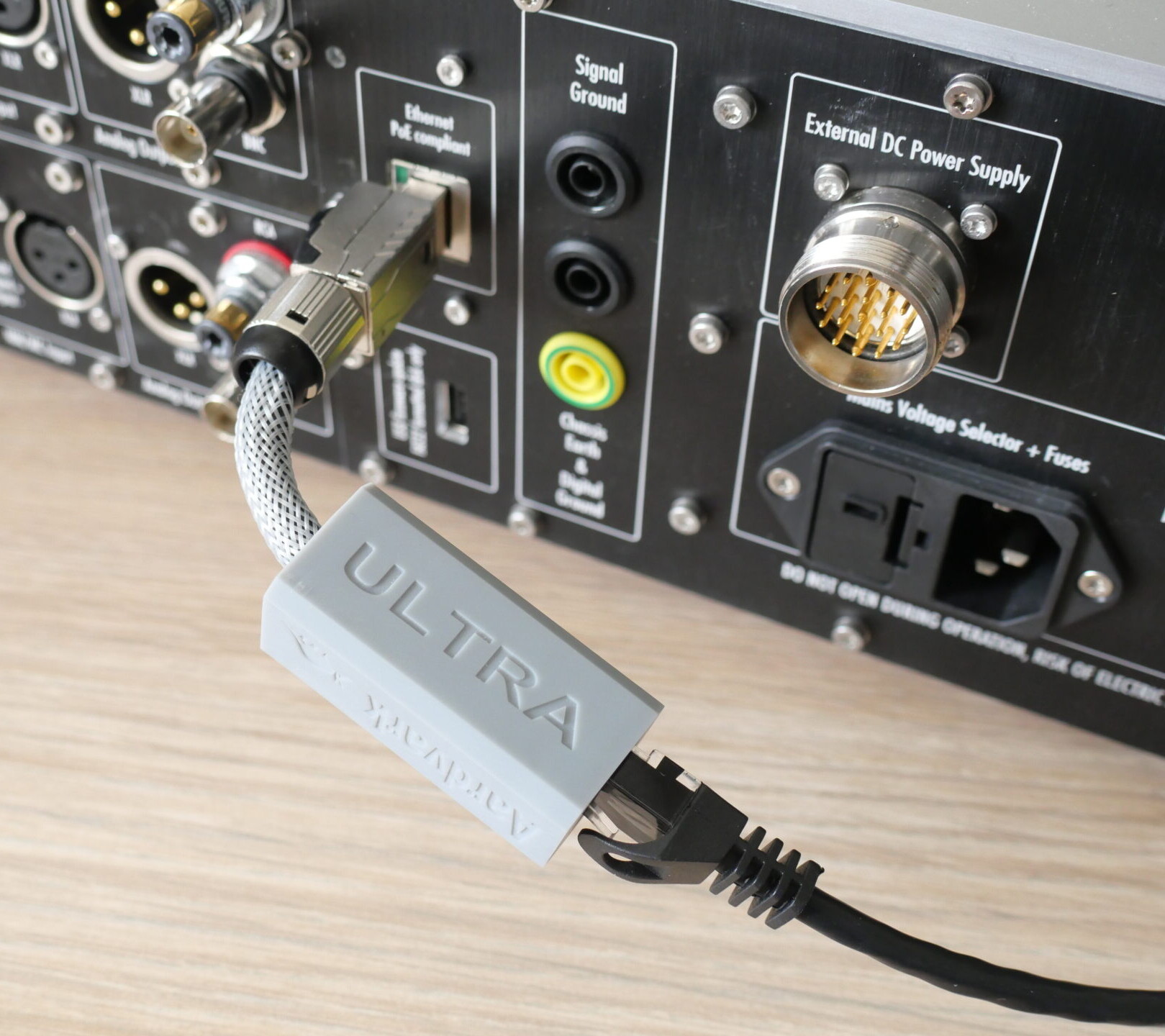However, there is one word of warning. The Ultra needs to burn in (or maybe, settle in) before you start making any kind of close comparisons.The review samples travelled by van from Munich and althoiugh used, I suspect that, like many cables and most speakers, they are not immune to ‘travel shock’. The manufacturer runs each unit for over 100 hours before despatch, so I suspect that settling is the reason for the audible change. Either way, whip an Ultra fresh out of the box and replace a well-used Classic and it will almost certainly disappoint, with a small, compressed and slightly mechanical sound. Run it for a good 24-hours and then do the comparison. The music will have quite literally expanded, with increased shape, texture, detail and dynamic range, a more fluid and planted presentation, greater temporal integrity. Don’t rush to judgement or you risk missing out on what could be a major musical benefit.
What’s beyond Ultra?
As good as using the Aardvark Ultra is and, as much as using it at the streamer input is definitely the place to start, can things get better still? What’s better than Ultra? More Ultra! I expected that adding a second Aardvark to the system would further improve things. What I wasn’t expecting was the scale of that improvement. Adding a second Ultra at the point where the router is connected to the switch brought an immediate and obvious increase in dynamic range, presence, fluidity, rhythmic articulation and expressive range and confidence. If one Ultra boosts the sense of performance, two takes it to another level: better band on a much better night! Given the Aardvark’s ability to absorb or reject noise, applying it to the noisiest components in the system is an obvious step and the noisier the system the bigger the impact. The affect of adding the Aardvarks to the standard Cat 6 network was arguably even bigger, even if they are no substitute for using proper cable. With the aardvarks installed, swapping out the generic Cat 6 for the Heimdall made almost as big a difference as adding the Aardvarks in the first place. If push comes to shove I’d opt for the Aardvarks first, but this is not a case of either/or: if the quality of network replay matters to you, you really will need to pay attention to both cables and sanitation.
But, in this system, we can take this yet another step, beyond the file replay network per se. Alongside the CH Precision C1.2 is an L1. Like a lot CH Precision pieces use Ethernet for system remote control. So in this case, it’s not just the C1.2 that is connected to (and vulnerable to) the network: potentially, it’s the L1 too.

With the Aardvark Ultras in place, the system is really singing, the DSD64 file of Benedetti Michaelangeli and Giulini’s Beethoven Piano Concerto No. 1 producing a performance that’s not just recognisably live in nature, but positively conduct-able. This is some serious musical communication. But if I run a Cat 6 cable from the network switch to the L1 to enable access to the line-stage via the CH Control App, the sound simply collapses, losing dynamic range, rhythmic integrity and momentum, colour, attack and presence. It completely loses that sense of creative tension, energy and collective effort that makes this such a vivid musical experience. (Which is why I rarely if ever use the Control App when playing CH equipment, except possibly for set-up – and even then it’s rare). Now, pull the Cat 6 cable and fit an Aardvark at the L1 end and revisit Beethoven. Suddenly the life and vigour is restored, the drama and sense of performance – and that’s with an Aardvark Classic. It’s not as good as no connection, but it’s roughly 85% of the way there – and I wonder how much further an Ultra might take you…

